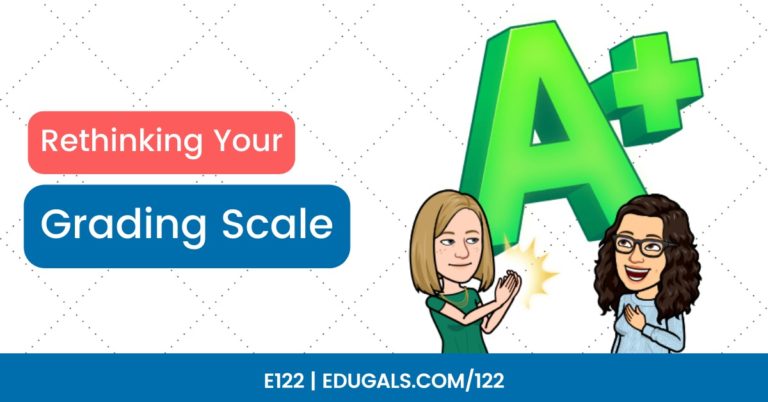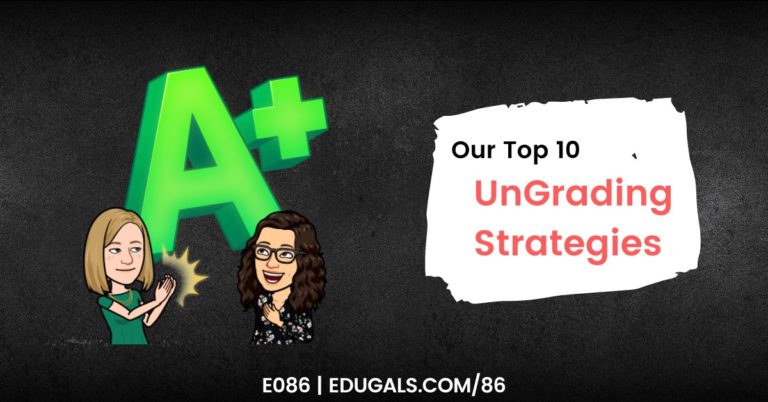Are you tired of traditional grading practices that perpetuate bias and hinder student learning? Imagine a grading approach that fosters fairness, transparency, and a true focus on mastery… doesn’t that sound amazing?
Specifications grading (or specs grading for short!) might be the answer!
Specifications (specs) grading is an alternative grading practice that promotes equity, reduces grading biases, empowers students, and cultivates a growth mindset. Specs grading is built on a mastery approach, where assessment and evaluation is closely tied to the curriculum and learning outcomes.
If that just resonated with you, then you definitely want to read on! I’ll go over what specs grading is in a bit more detail as well as 6 key benefits of specs grading that I have seen since I’ve adopted this grading approach in my classroom.

What is Specifications (or Specs) Grading?
Specifications grading is an alternative grading approach to traditional grades for the classroom. The premise of specifications (or specs) grading is to lay out specific requirements (i.e. specs) for each grade level within your course.
Specs grading is essentially defined as a competency-based or mastery-based grading approach. There is a strong focus on creating learning outcomes, and tying those learning outcomes to the various assignments or modules within your course grading system.
Specs grading also often allows for multiple attempts or revisions, since students are held to high expectations. For example, in my classroom, a “pass” for any assignment, project, or test is defined as 80% or greater. Students get 3 attempts or revisions for all evaluations in my classroom since the “pass” is set at such a high level.
What I really love about specifications grading is that you only count the work that meets the specs towards a final grade. That way, it aligns very nicely with mastery-based learning approaches! AND… students focus on learning and growth over grades when mastery-based learning is involved.

How does Specifications Grading Benefit Students?
There are so many benefits for students when you use specs grading in your classroom. I’ve seen my students thrive this year as I’ve implemented this alternative grading approach! My students are more focused on growth over grades, and are using feedback to develop their knowledge and skills in my classroom.
Here are a few of the most impactful benefits of specifications grading that I have witnessed in my classroom this year:
1. Increases Student Accountability
What I really love about specs grading is how expectations for students are super clear and detailed. My students know exactly what they need to do to achieve a particular grade in my class. This, in turn, encourages students to take ownership of their learning journey.
I also set up really detailed mastery criteria (a rubric of sorts) for any projects or labs that I give to my class. I list out all of the criteria that students need to show mastery on for that particular assignment, and set my “pass” at demonstrating at least 80% of the criteria. My students love this, because they can self-assess their progress and really learn from their mistakes. Even when students achieve a “pass”, they will often still revise their work and hand it back in to me for further feedback!
Specs grading also aligns so well with mastery-based learning. My students are held to high expectations (generally 80% or greater to demonstrate mastery). I’ve noticed that all students, when held to high expectations, will meet them… even those students who often struggle in traditional classrooms. I think this is because of the emphasis that learning is not always a straight path and that we all learn at different paces. When mastery is involved, students know that they can’t just take a zero and not learn the content. They are held accountable!
2. Promotes Intrinsic Motivation
I often use a lot of self-reflection and self-assessment in my classes to go along with specs grading. Without traditional grading with points and percentages, it can be really helpful for students to have them reflect on their own progress, identify strengths and areas for improvement, and set personal goals.
Self-reflection and self-assessment is great for promoting intrinsic motivation. When students set goals and track their progress towards their goals, it can provide a big boost towards motivation. I’m a big fan of including a “Friday Reflection” in my classes. Using a quick Google Form, students reflect on their progress and learning over the past week, while also setting new goals for the week ahead.
Also, when the emphasis in class is on mastery of content and skills over grades, students begin to see grades as a reflection of their level of mastery rather than as a competitive measure with their classmates. This encourages a growth mindset and builds intrinsic motivation.
3. Reduces Anxiety & Fear of Failure
Another great benefit of specifications grading is that it creates a culture where failure is not only okay, but it is celebrated! Moving away from the traditional “all or nothing” mentality of high-stakes grading can help alleviate the pressure of getting a high grade. And… when students feel comfortable with failure, the anxiety with grades disappears.
I give my students multiple opportunities to demonstrate their learning, which reduces the fear of failure. In fact, just the other day in my classroom, four of my students did not pass an outcome on their test. Instead of being upset about it, they were taking a picture of their failed attempts all together to celebrate it with the world!
With specs grading, students know exactly what they need to do to achieve the grade that they want, so there is less uncertainty around grades themselves. When expectations are clear, students feel more confident in their ability to meet the requirements. I rarely get the questions like “how much is this assignment worth?” or “Is this assignment being marked?”.
Instead, students are asking questions about the mastery criteria instead, and deeply thinking about how they might meet the criteria that I have outlined for them.
4. Connects Curriculum with Learning Outcomes
When designing my courses, I start out by looking at the curriculum standards and creating the course learning outcomes from there. Basically, I break out the sticky notes, write down each of the main topics that I need to cover for the curriculum, and then I look for ways to cluster topics together into learning outcomes. It’s a bit of a puzzle but I love pulling together a course in this way!
From there, all of my course tests, assignments, labs, and projects are aligned directly with these learning outcomes. For example, each test that I create is broken down into each learning outcome that I am assessing and I record the achievement for each learning outcome separately in my grade book.
What I love about doing this the most is that it makes communication with parents insanely transparent. I can pinpoint exactly what learning outcomes that my students are struggling with and this can help parents understand where they can support their child best.
5. Facilitates Mastery-Oriented Feedback
Mastery and specs grading work so well together. For any test, assignment, lab, or project, I allow my students 3 attempts or revisions to demonstrate mastery. For tests, I typically cycle through the learning outcomes by having a designated test day each week and set dates for which learning outcomes will be available to write. This way, students have clear timelines to work towards.
Similarly, for labs, projects, or other assignments, I set clear due dates for each attempt or revision. If students miss those dates, then they lose one of their attempts.
My students get a lot of timely and constructive feedback through the detailed mastery criteria rubrics as well as through conversations with me. What I’ve noticed by structuring my courses this way is that my students pay much closer attention to the rubrics provided and ask me a lot more questions than they did before I used this approach. I can also see the tremendous growth as they build their skills over the semester!
By using mastery along with specifications grading, I am nurturing a growth mindset with my students and I love seeing them celebrate, learn, and grow from their mistakes.
6. Addresses Bias in Grading
There is a lot of inherent bias in traditional grading practices. That might sound a bit controversial but it is true! Specs grading, on the other hand, works to reduce or eliminate those biases, resulting in more equitable grading practices.
For example, specs grading is focused on connecting any assessments to learning outcomes. This means that no behaviours (late work, missed assignments, etc) are included in the grade. By eliminating behaviours from grades, you are focusing solely on the achievement of the curriculum so the grade itself is more accurate and reflective of what the student knows and can do.
Also, zeroes in grades are removed. Zeroes create a lot of bias in grades as well since using a 100-point scale and assigning zeroes means that the grading scale is biased towards failure. If a student gets a zero on a single assignment, assessment, or test, the student needs to overcome a huge hurdle to restore their grade.
I use specs grading to hold my students accountable and to achievement of high expectations. The mastery criteria and the use of learning outcomes tied to curriculum ensures that I am creating a grading system that is bias-resistant and a better representation of student achievement.
Specifications Grading is Truly Transformational…
Overall, specs grading has truly transformed my classroom. There is no way that I would ever go back to traditional grading practices now that I’ve seen how much this approach has benefited my students.
Specs grading has boosted student accountability and intrinsic motivation, while reducing anxiety and stress in my classroom. It has also helped me to structure a solid program by connecting the curriculum and assessments closely to the learning outcomes that I’ve defined for the class. AND… it works so well with mastery-based learning by providing ample opportunities for feedback and growth!
There is so much potential for specs grading to increase student motivation while promoting deeper learning and equitable grading practices! It is definitely a practice that is worth trying out. If you do try specs grading, let us know how it goes in the comments below!
Want to know what specifications grading looks like in the classroom?
Be sure to check out our podcast episode on specs grading if you want more details about what this looks like in the classroom!





